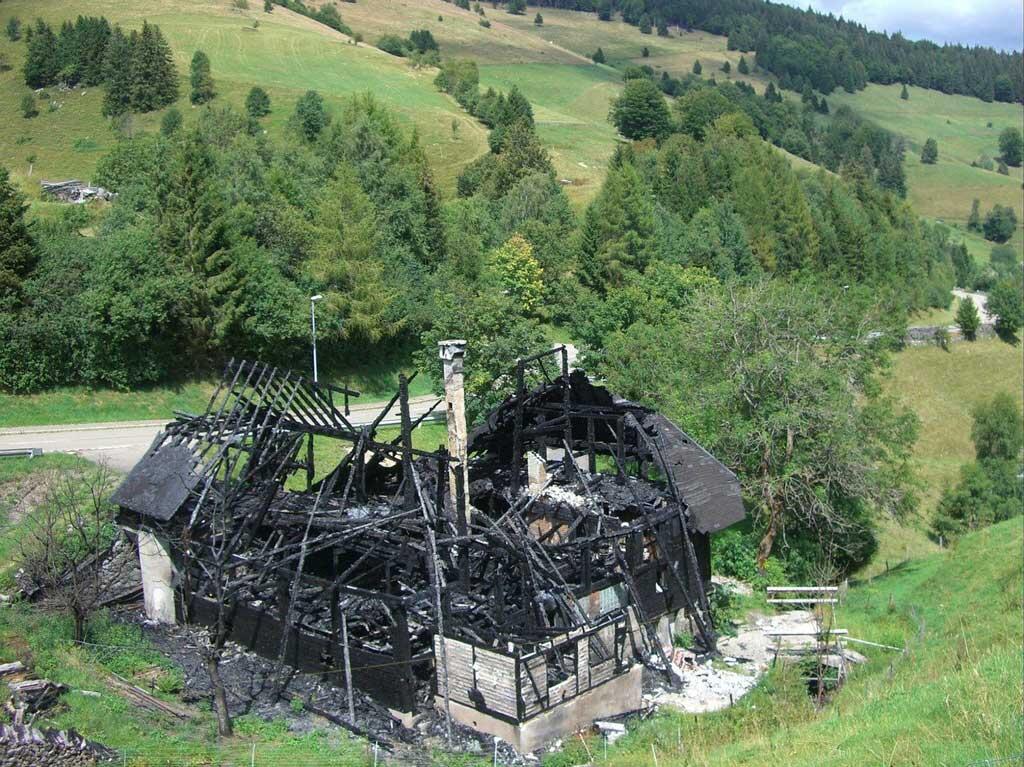
Admittedly: There are definitely topics that are more exciting than fire protection in venues. But: We have fought our way through and summarized for you what an event manager should know about fire protection and venues to be on the safe side.
What is the Ordinance on Places of Assembly?
The Venue Ordinance (VStättV(O)) regulates the construction and operation of venues in many German federal states. The structural regulations naturally also have a major influence on fire protection: fire extinguishing systems, warning systems, escape routes, equipment and, in the course of events, the use of fire or pyrotechnics are also regulated here. This is of great importance for both the owners of a venue and the event organizers themselves. After all, neither wants to take any risks at this point.
The German Conference of Building Ministers (ARGEBAU) has drawn up the Model Ordinance on Places of Assembly (MVStättVO) as a nationwide, uniform regulation. It is intended to serve as a basis for state regulations, but is not legally binding.
A place of assembly is a so-called special building. General building law is regulated in the state building regulations. There is a special set of regulations for special buildings, such as places of assembly, which differ from state to state.
The Ordinance on Places of Assembly goes back to DIN 18600 "Places of Assembly", which was adopted directly after the Second World War and was intended to regulate the building law for places of assembly. Over the years and following German reunification, it has been repeatedly reviewed and amended.
For the sake of consistency, we will refer to the Model Ordinance on Places of Assembly in the following article. Please note the respective deviations in different federal states.
When is a place of assembly a place of assembly?
What makes a venue a place of assembly and qualifies it to comply with the German Venue Ordinance? Fortunately, this is clearly regulated.
"Places of assembly are structural facilities or parts of structural facilities that are intended for the simultaneous presence of many people at events, in particular of an educational, economic, social, cultural, artistic, political, sporting or entertaining nature, as well as pubs and restaurants." (MVStättVO) §2
Section 1 of the Model Ordinance on Places of Assembly then regulates in more detail when exactly the term "many people" can be used. Critical figures are 200 people for closed rooms and 1000 or 5000 people for open-air events.
When does the Ordinance on Places of Assembly apply?
The Ordinance on Places of Assembly naturally only applies to places of assembly as defined in §1.
The Model Ordinance on Places of Assembly lists three types of places of assembly:
Places of assembly with meeting rooms
Outdoor meeting places
Sports stadiums
For all places of assembly, the applicability of the ordinance depends on the size or number of visitors to the place of assembly. As mentioned above, the key figures are 200 visitors for closed rooms, 1000 visitors for outdoor events, and 5000 visitors or more in sports stadiums and grandstands.
Places of assembly do not apply:
1. rooms dedicated to religious services,
2. classrooms in general and vocational schools,
3. exhibition rooms in museums,
4. temporary structures (note: such as circus tents)
However, there is also an exception here: If the location (or the museum or school) is used for another public event, the Venue Ordinance may also apply here.

This is exactly what the fire protection regulations in the Assembly Venues Ordinance are designed to prevent.
Responsibilities for fire protection: operator or organizer?
There can often be misunderstandings in this matter, if only because of the terminology: Operator, event manager, organizer. The operator is generally the owner of the venue, or a long-term tenant or leaseholder. The operator can appoint an event manager for the venue as his deputy. This person is not the same as the organizer or project manager of the event.
This division of roles is particularly misunderstood in §38 of the Model Venue Ordinance: (1) The operator is responsible for the safety of the event and compliance with the regulations.
This only refers to the structural issues regulated in the Model Ordinance on Places of Assembly, not to other safety aspects of the event such as the protection of minors, for which the organizer is solely responsible. In terms of fire safety, this means that everything related to the structural conditions of the venue and the resulting obligations to prevent a fire are the responsibility of the operator of the venue. Nevertheless, event managers should aim for good cooperation with the operator and discuss fire safety-critical aspects (e.g. the stage show) in detail with the operator of the venue.
Paragraph 38 of the Model Ordinance on Places of Assembly also regulates further obligations of the operator, such as the obligation of the operator or event manager to be present at the place of assembly (not necessarily at the event). Or the possibility of transferring the obligations specified in §38 to the organizer.
Caution is advised for responsible event managers in this regard. The boundaries between the operator's obligations and the organizer's obligations should ideally be defined before the event. Both sides are dependent on good cooperation. To protect yourself, you can define certain rights and obligations on the part of the organizer and operator with regard to the venue in advance.
The most important points for fire protection in places of assembly
§ 19 VStättV: Fire extinguishing equipment and systems
Assembly rooms, stages, foyers, workshops, magazines, storage rooms and necessary corridors must be equipped with a sufficient number of suitable fire extinguishers. The fire extinguishers must be clearly visible and easily accessible. In venues with assembly rooms with a total floor area of more than 1000 m2 , a sufficient number of wall hydrants must be clearly visible and easily accessible in suitable locations. In larger event rooms with a total floor area of more than 3600 m2 , in event rooms in basements or with open kitchens and in foyers through which several escape routes lead, automatic fire extinguishing systems must be installed where necessary.
§ Section 31 VStättV: Escape routes and areas for the fire department
Escape routes on the property as well as access roads, set-up and movement areas for emergency vehicles of the police, fire department and rescue services must be kept clear at all times. This must be indicated permanently and clearly visible. During operation, all doors to escape routes must be unlocked.

The right signage plays a major role in escape routes.
§ Section 32 VStättV: Visitor spaces according to the seating and escape route plan
The number of visitor seats approved in the seating and escape route plan may not be exceeded and the approved layout may not be changed. The approved plan must be clearly visible near the main entrance of each assembly room.
§ Section 33 VStättV: Curtains, equipment, props and decorations
Curtains for stages and stage areas, equipment, decorations and visitor seats must be made of at least flame-retardant Sweaprial; normally flame-retardant Sweaprial is sufficient for props.
At least non-combustible Sweaprial must be used for decorations in corridors and stairwells. Natural plant decorations may only be in rooms as long as they are fresh.
Flammable material must be kept far enough away from ignition sources such as spotlights or radiant heaters so that the material cannot be ignited by them.
§ Section 35 VStättV: Smoking, use of naked flames and pyrotechnics
Smoking is prohibited on stages and stage areas, in workshops and storage rooms. This does not apply to performers and participants on stage and scene areas during rehearsals and events, insofar as smoking is justified by the nature of the events.
The use of open flames, flammable liquids and gases, pyrotechnic sets, objects and igniters and other explosive substances is prohibited in assembly rooms, on stage and scene areas and in sports stadiums, although exceptions are possible if agreed with the fire department. The use of pyrotechnic objects must be supervised by a suitable person in accordance with explosives legislation.
The use of candles and similar light sources as table decorations is permitted. The use of open fires in designated kitchen facilities for the preparation of food is also permitted.
These prohibitions must be permanently and clearly indicated.
Conclusion
In principle, the Assembly Venues Ordinance regulates the construction and operation of assembly venues and therefore also fire protection - which is often closely linked to the structural conditions. The Venue of Assembly Ordinance is a state ordinance - each state can therefore vary in the implementation of the ordinance or individual rules and you should definitely take a look at the respective state ordinance for the implementation of your event. For this reason, we are guided by the so-called Model Ordinance on Places of Assembly, which serves as a nationwide template and orientation for the individual federal states.
The Ordinance on Places of Assembly and the resulting obligations for fire protection are therefore primarily obligations of the operator of a place of assembly. However, to be on the safe side and offer guests a safe event, it is worth discussing critical details of event planning with the organizer, defining rights and obligations and working closely with the operator. Here's to a successful and safe event.
Disclaimer: The content of this blog post has been compiled with the greatest possible care and to the best of our knowledge. Nevertheless, the provider of this website assumes no liability for the topicality, completeness and accuracy of the pages and content provided.
